Home •This week’s blog • Time for tea • Blackbirds • Border collies
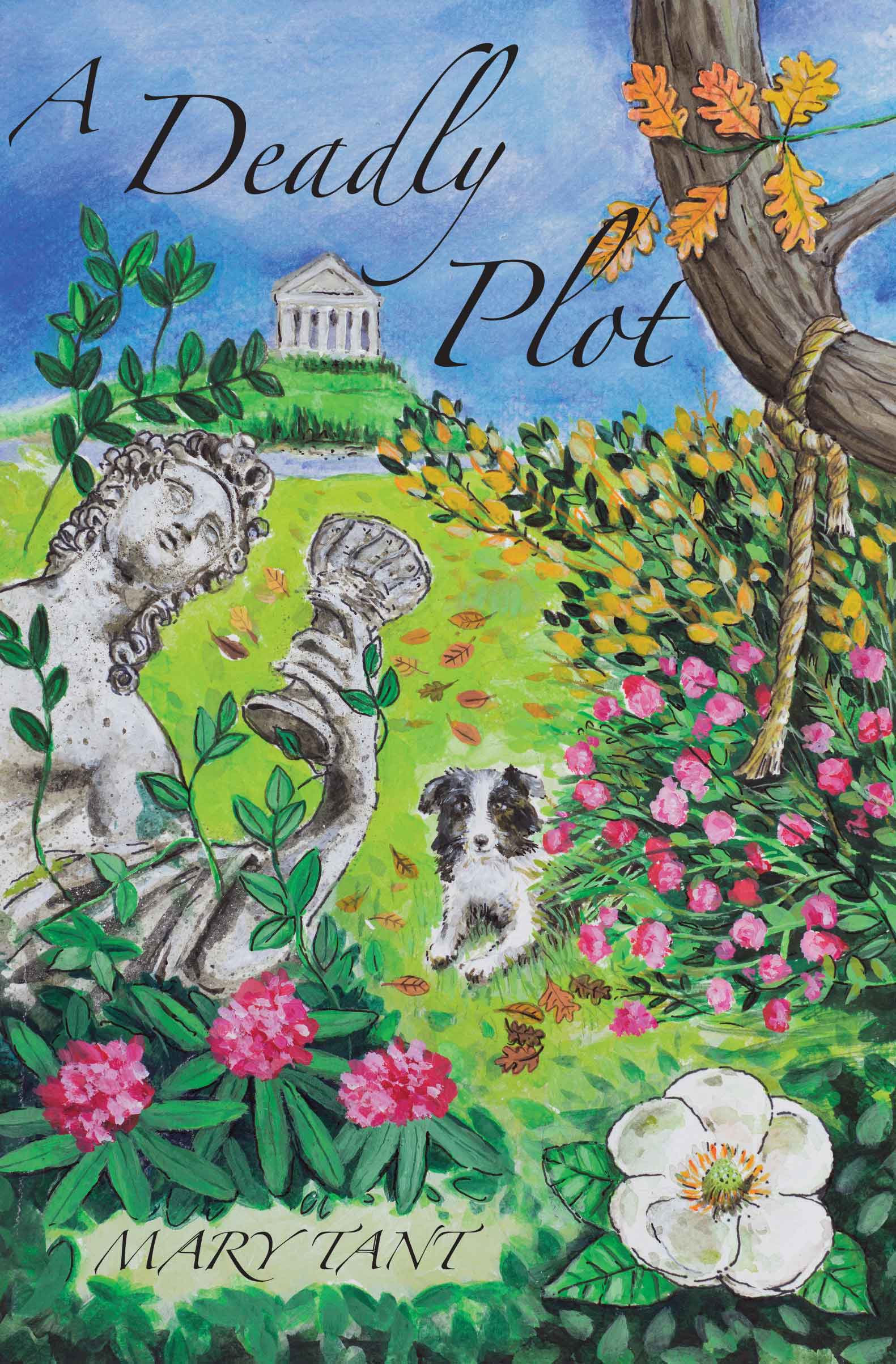 Mary Tant's latest Rossington mystery – A Deadly Plot – was published on 17 March 2016.
Mary Tant's latest Rossington mystery – A Deadly Plot – was published on 17 March 2016.
Visit your independent bookshop or friendly crime specialist for a copy – or order it from the local library.
January 2016
Sunday 1 January 2017
There could have been small camps of early humans hidden deep in the thick tree cover of the Devon gorge below, betrayed only by wisps of smoke drifting up through the branches, fading as they reached higher levels and disappeared against the clouds of the blue sky. Certainly, the Dartmoor landscape would have witnessed scenes like this long ago when people were first colonising the land here.
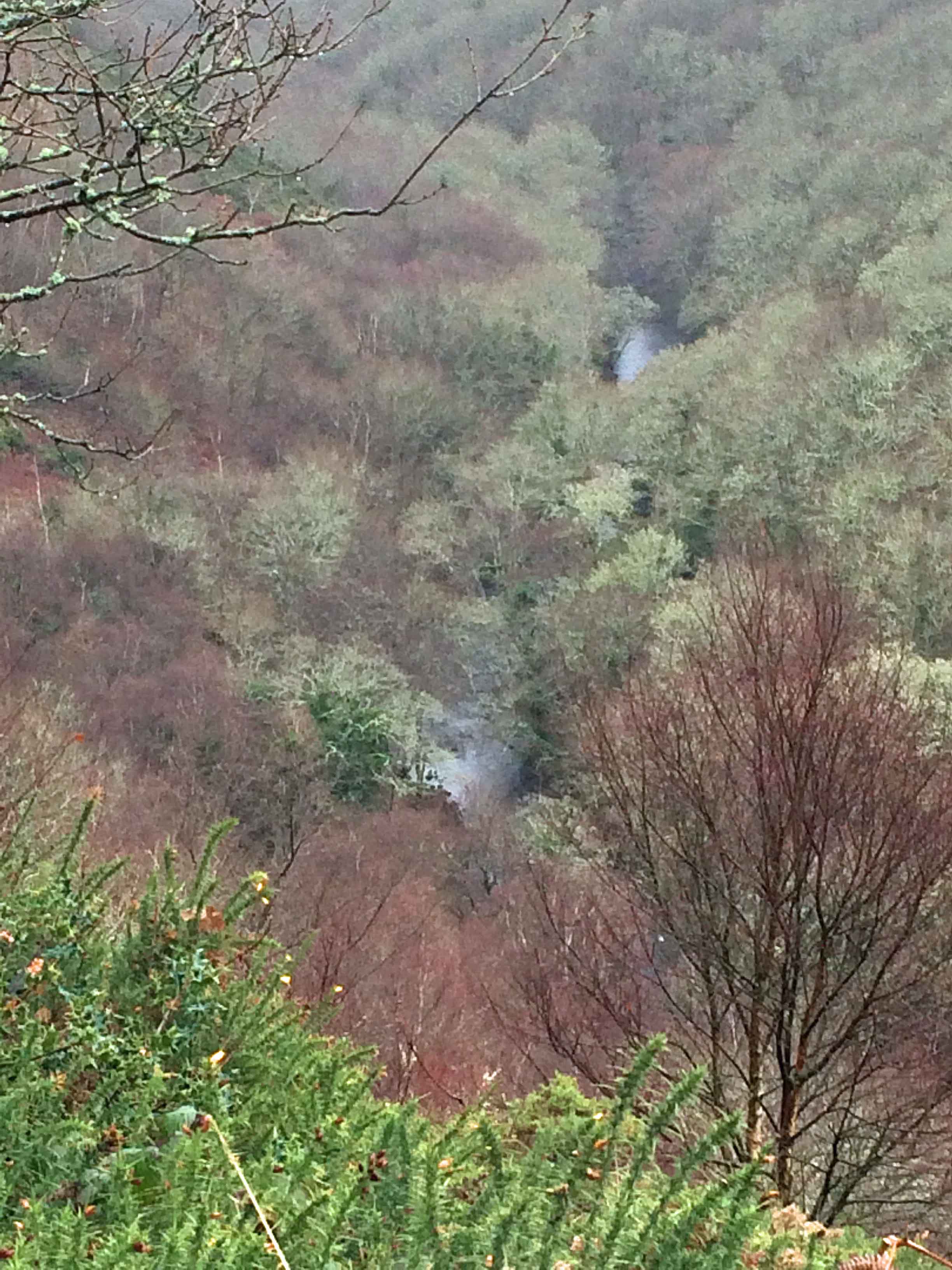
But today it was ephemeral columns of fog that were coiling and twisting up out of the trees. These stretched along the gorge, thickly covering the steep slopes on either side of the river as far as I could see from where I stood high above. It was a silver landscape in front of me, the river glittering far below in gaps between the lichened branches of the gnarled trees that spread their branches to touch each other, guarding their silent world.
Monday 2 January 2017
A blackbird sat on the fence of the Dartmoor garden, pecking vigorously at the peanuts in one of the feeders that line it, while a robin kept in the shadows below picking up the scraps that fell from above. Blue and great tits are the most regular feeders here, but there are still frequent visits from a greater spotted woodpecker and a nuthatch.
Tuesday 3 January 2017
I lay in bed watching the light come up over the winter Devon landscape outside. Frost lay thickly over the fields, turning everything white, grass, hedges, trees. Even the sky was a pale opal colour.
Only the cows in a far field were dark shapes as they began their usual early morning saunter down towards the river that lay out of my sight. The first to appear moved slowly, casually, then the movement became quicker as the calves began to skitter ahead and their mothers moved faster to keep up with them. By the time the whole herd was on the move a rose-pink band was flushing the horizon.
Wednesday 4 January 2017
Cows were on the move again as we drove back through Somerset. Half a dozen cows were wading with determination across a brook, the water reaching well up their legs and stretching up to the stomachs of the calves who were following their mothers. More cows were on the move through the lush meadow behind them, in a miniature English version of the great African herd migrations. The cows who had already crossed were grazing close together in the centre of another field, where the grass seemed as lush, but not more, than the meadow the herd was leaving.
Thursday 5 January 2017
It looked as though the layer of leaf mould under the beeches had come to a tumultuous life. The bronze leaves were sodden as the frost covering them melted in the sunshine. They heaved and wriggled and even flew through the air, upwards in reversal of the natural order of things. Busy among them, causing all the activity, was a host of blackbirds, joined here and there by greyer thrushes.
Friday 6 January 2017
Catkins have hung in tight tails from the hazels for at least a month in the Hampshire woods and along the Kennet and Avon towpath. Snowdrop and daffodil shoots have speared up through the damp ground and thick layer of leaf mould in my garden. And I have had a pair of plumped-up robins coming to feed since last month, their red breasts gleaming in the dimness of the pyracantha branches as they wait for me to perform my mealworm spreading routine.
Sunday 8 January 2017
Three fallow hinds slipped across the lane, dark shadows under the gloom of the woodland trees edging the route. A stag followed them, balancing his antlers with care as he kept his place in the centre of the group, for he was followed immediately by three more hinds, clustering close.
Monday 9 January 2017
It sounded like runners approaching along the towpath that I was just walking towards. But as I reached it two swans came down from the sky, their long white necks outstretched, legs extended as they landed in a long slide on the water. It was their wings I’d heard, beating powerfully to slow their descent.
Tuesday 10 January 2017
A swan drifted slowly across the surface of one of the long lakes in the valley below Selborne village. Beyond, on the far bank, stood a slender upright grey heron. The heron launched suddenly into flight, out across the water, sharply around and steeply up into the trees. The swan drifted on, quite unconcerned by the sudden movement behind him.
Wednesday 11 January 2017
Birds called, whistled, quacked, from on and above the lake. They were just dark silhouettes against the water, the shapes of geese, duck and smaller wildfowl.
But beyond the lake the grassy pasture rose steeply in the old deer park. One or two deer still linger here, ready to pop out of the thickets in front of Bryn as he passes, attempting to recreate a mediaeval deer hunt scene before me.
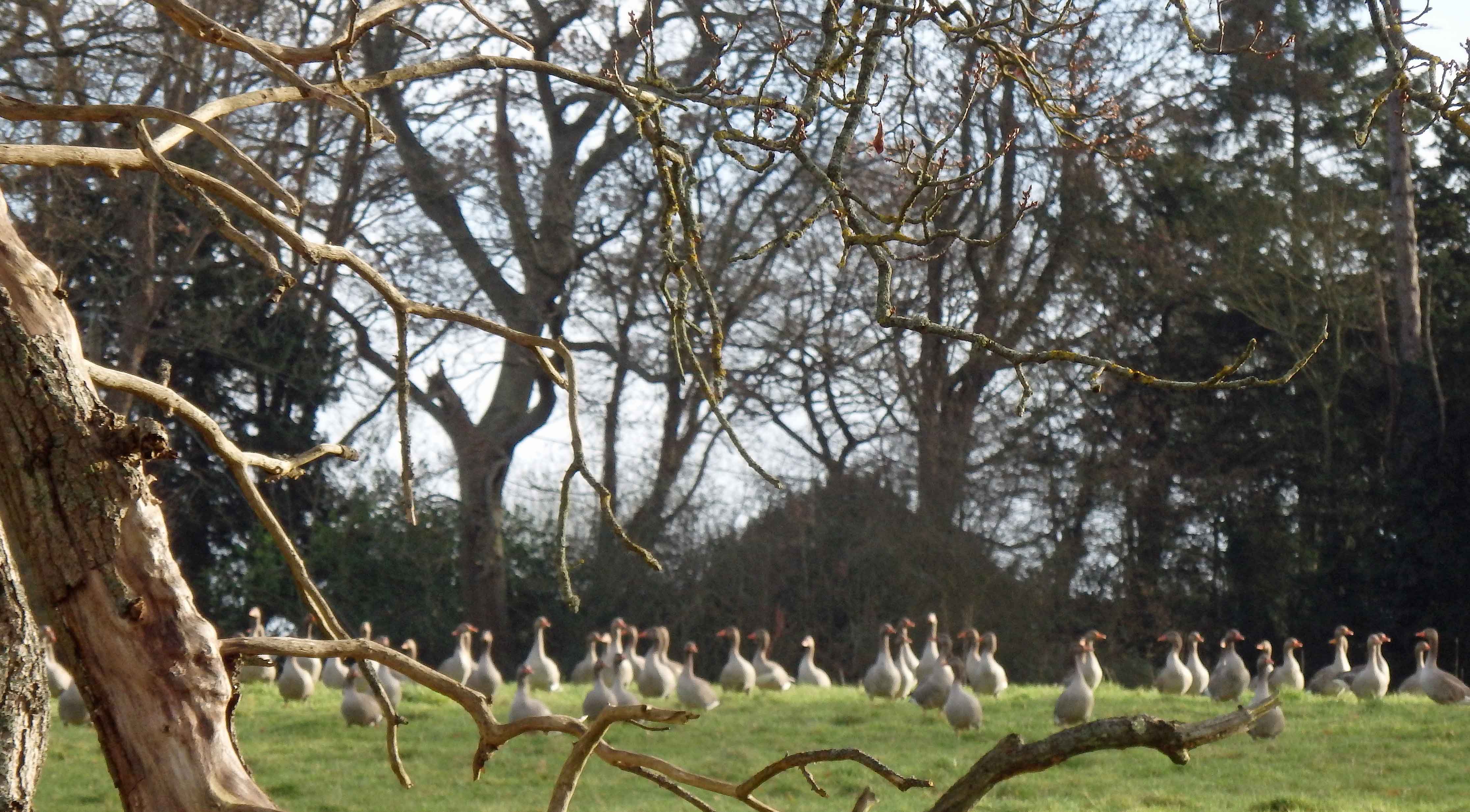
Today the occupants of the grassy slope were more numerous than the deer must ever have been, even if they were smaller. Hundreds of geese were clustered there in a flock, mainly greylags with their distinctive orange legs. They moved closer together as we approached, turning as one to watch us. A few lost their nerve and took off to circle a minute later over the pond, descending in what looked like a leisurely drift down to the water. The others stood their ground, watching us pass by.
Thursday 12 January 2017
My young Border collie knew the deer were about as he crossed from side to side of the woodland track, tracing their scent. But he didn’t spot them when they finally broke cover, bouncing through the trees beyond the thicket of gorse and brambles beside the track. They made no sound, I only knew they were moving when I saw their stripy backsides bouncing up and down for a couple of seconds until the deer were out of sight.
Friday 13 January 2017
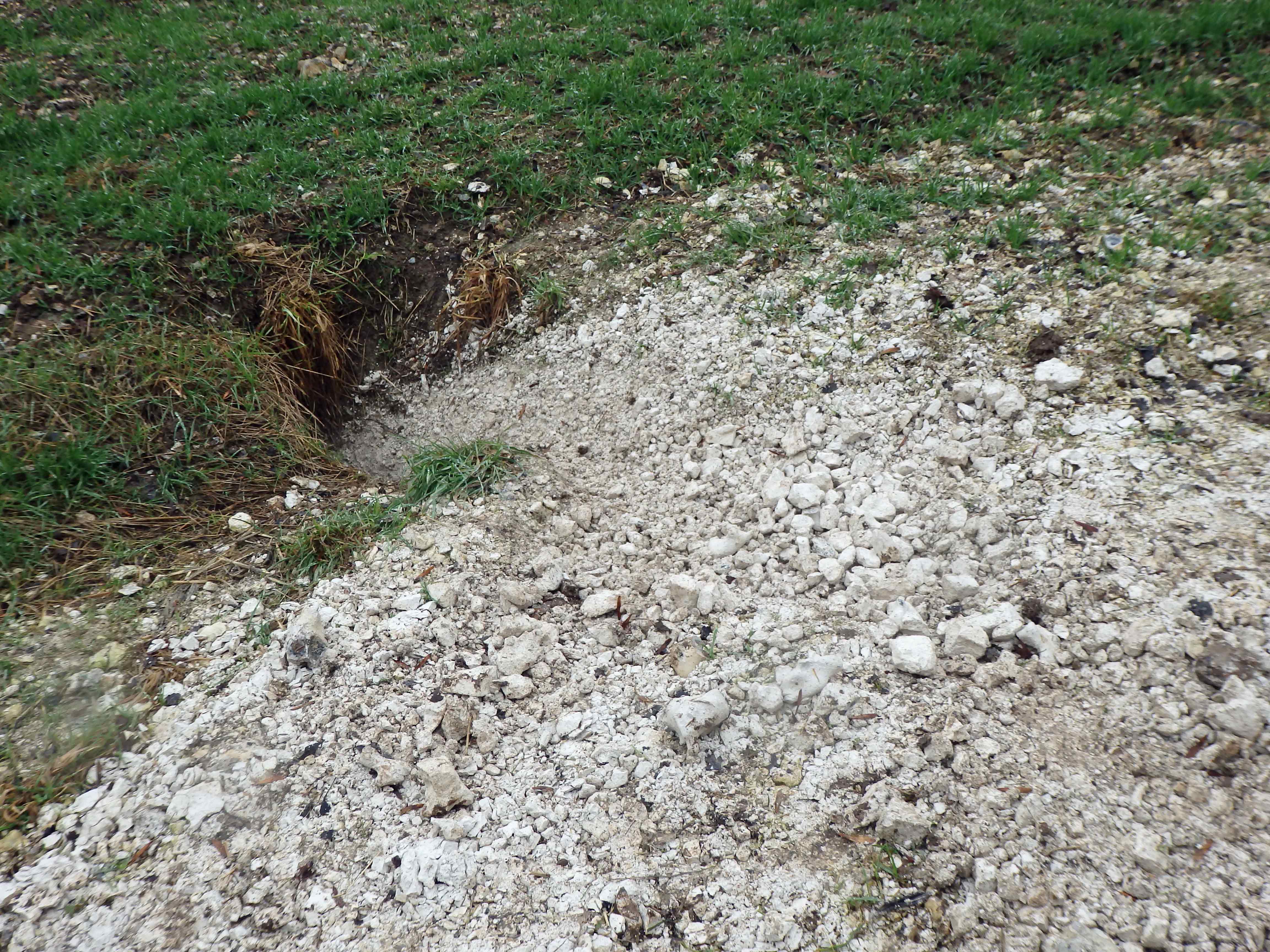
I wasn’t sure what the distant mound of white was along the field verge. When I reached it I found a big pile of chalk, dug out of the edge of the ploughed land by an expert excavator. One of the badgers from the nearby sett in the meadow below the path had made another entrance, or exit.
Saturday 14 January 2017
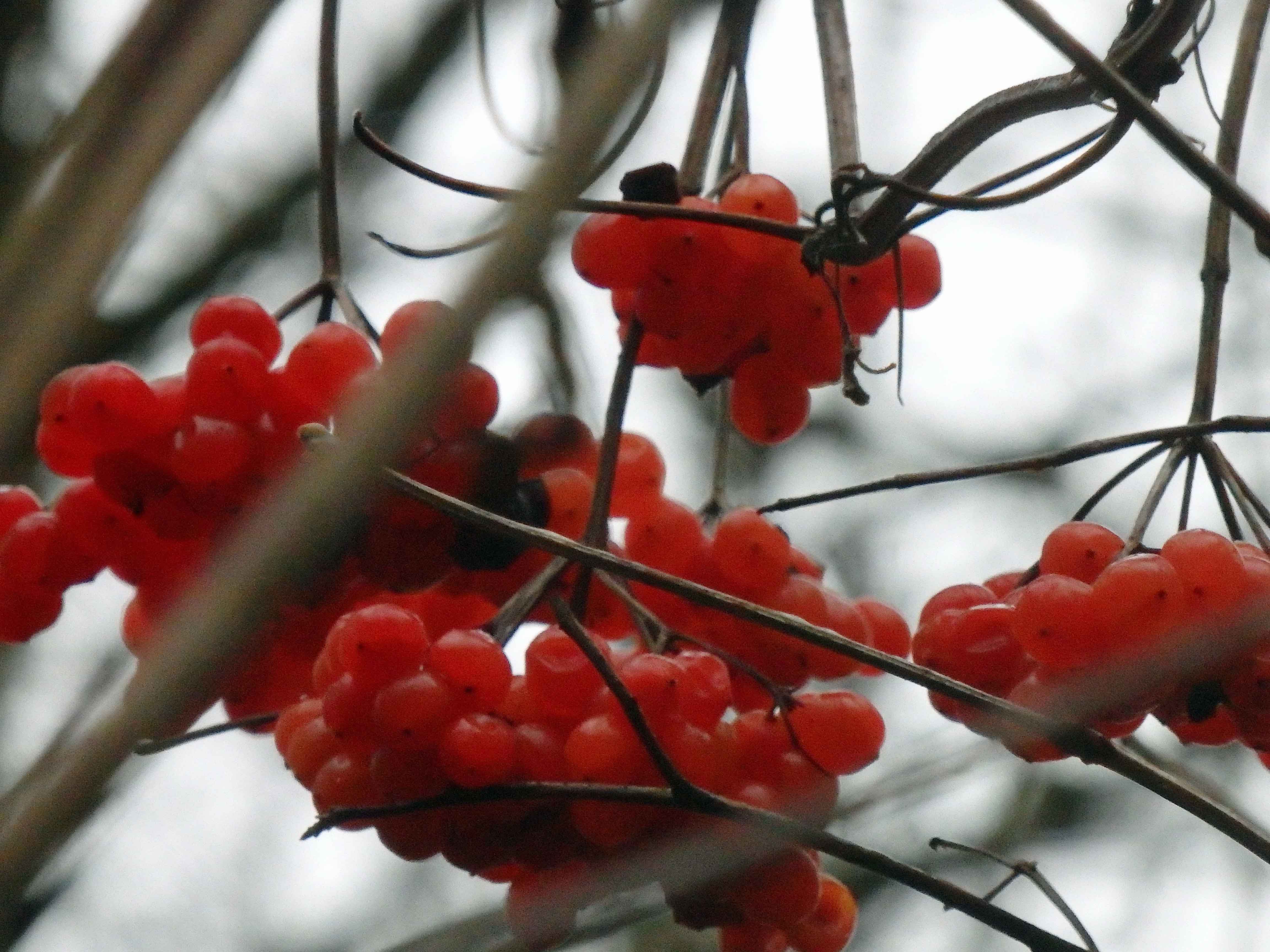
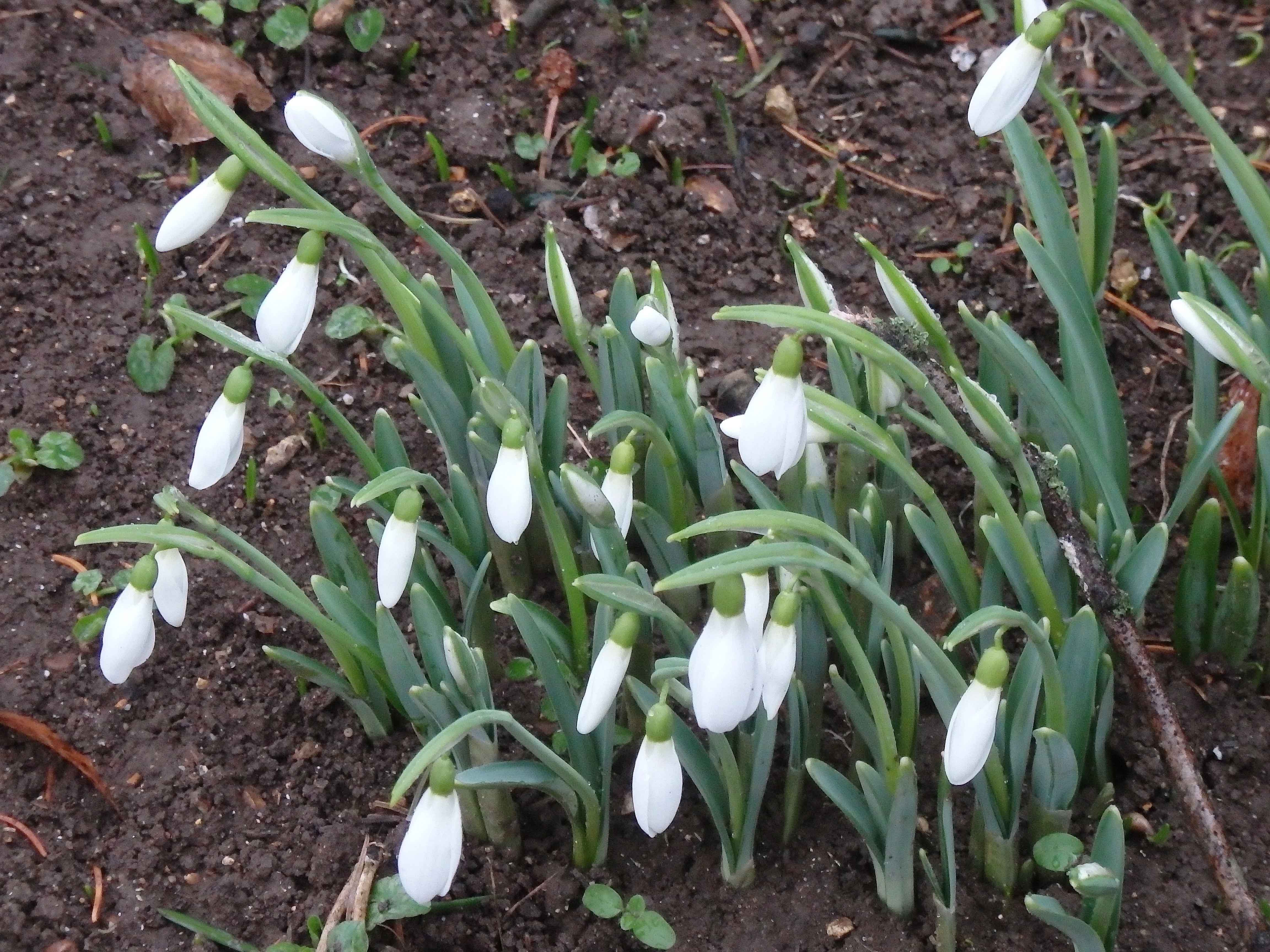
The last of the winter rowan berries hang in glistening clusters among the bare branches of the Hampshire woodlands on the chalky slope of the bourne valley. In the churchyard below is one of the first signs of spring. Snowdrops are opening beside the path with the promise of more to come into flower over the graves.
Sunday 15 January 2017
Walking and sliding over the woodland floor pushed the wet leaves into heaps, revealing the clumps of new primrose leaves that have sheltered under cover.
Monday 16 January 2017
A new visitor came to my back garden today. A small slender grey bird with a flash of yellow on his rump, he bobbed up and down as he fed on the lawn near the pond. A grey wagtail.
Tuesday 17 January 2017
Three robins came to feed in my back garden today, all co-existing amicably in a small group, so perhaps last year’s youngsters have stayed together for the winter. And while they were busy on the ground among the mealworms, a wren flew into the willow above them, perching there with cocked tail for a few seconds.
Wednesday 18 January 2017
Browned leaves lay in sodden heaps against the crisp white rimed grass of the common. A female blackbird blended in beautifully with the leaves, and was only visible when she stretched her head upwards, pulling and tugging a worm out from under the pile she’d been searching. After her meal, she flew up to the branches of the tree nearby and sat contemplating the scene for a few minutes. All around her over the common other blackbirds were busy, their heads bobbing up and down as they conducted their own searches for worms and grubs.
Friday 20 January 2017
One minute the darkening sky was clear, the next, clouds of starlings were corkscrewing down over the Somerset Levels. They landed in the reed beds to roost overnight, flattening vast areas of reeds under their weight. There were about half a million of them, filling the air with their cries, as they settled into place. On previous years, there have been up to three million of the birds spending the winter nights here.
Saturday 21 January 2017
A thrush has been appearing in my back garden since the recent freezing weather has started. He keeps to the bottom of the garden, away from the other birds, but if it is quiet he darts up to the terrace to snatch some mealworms from there and rushes back down the garden to eat them in private.
Once Bertie, the male blackbird, spotted him and hurried across to chase him away. At the same time, he also chased away Bella, the female blackbird, who at other times is the more dominant of the pair.
Sunday 22 January 2017
A dunnock has for most of the winter fluttered down to peck at the garden room window. He lurks in the overhanging wisteria, then comes down and hovers right by the glass, occasionally pecking delicately at it. There is a faint impression of his wings, and sometimes of his body, against the glass in all the upper panes.
He doesn’t seem agitated enough to be seeing a reflection and assuming it’s a rival, so I can only guess that he’s picking up tiny insects that may have splatted against the windows.
Monday 23 January 2017
My own back garden starling flock stands at a dozen birds. One that I assume is Stan, their progenitor, usually arrives first and has a few minutes on his own. Then others come in quickly, by ones and twos.
The blackbirds and robins have been out earlier, feeding before the horde comes down, and they will visit from time to time during the day.
The blackbirds come hurrying from cover to cover on the ground, busy and purposeful. The robins appear to drift through the trees and shrubs up to the terrace, but their progress is just as purposeful. The grey wagtail appears like a ghost in the morning, keeping to the lower lawn if the upper is busy, but coming up to it if the other birds have gone elsewhere.
The starlings will normally only come again in the early afternoon, and there is nothing subtle or careful about their approach. Once on the ground, though, they are very alert, one head or another popping up every second from feeding to check for danger.
All of the birds who come, except the starlings, like to drink first, so defrosting the water bowls and the pond is a priority. The starlings are more interested in the food.
Tuesday 24 January 2017
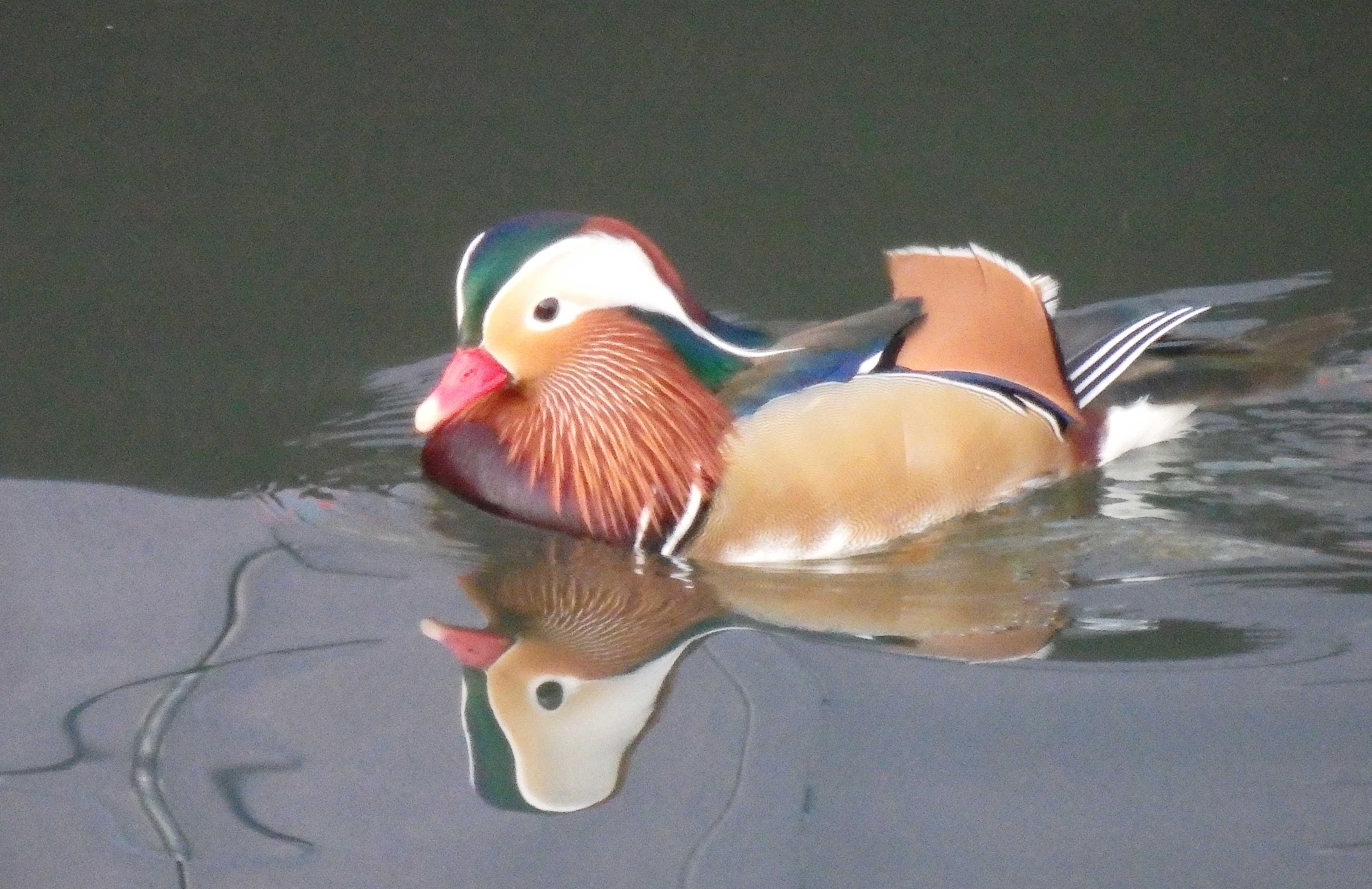
A single vivid stranger mingled with the mallards on the canal bank. When they took to the water the Mandarin duck went with them, staying close to one of the females, while a group of drakes trailed them both.
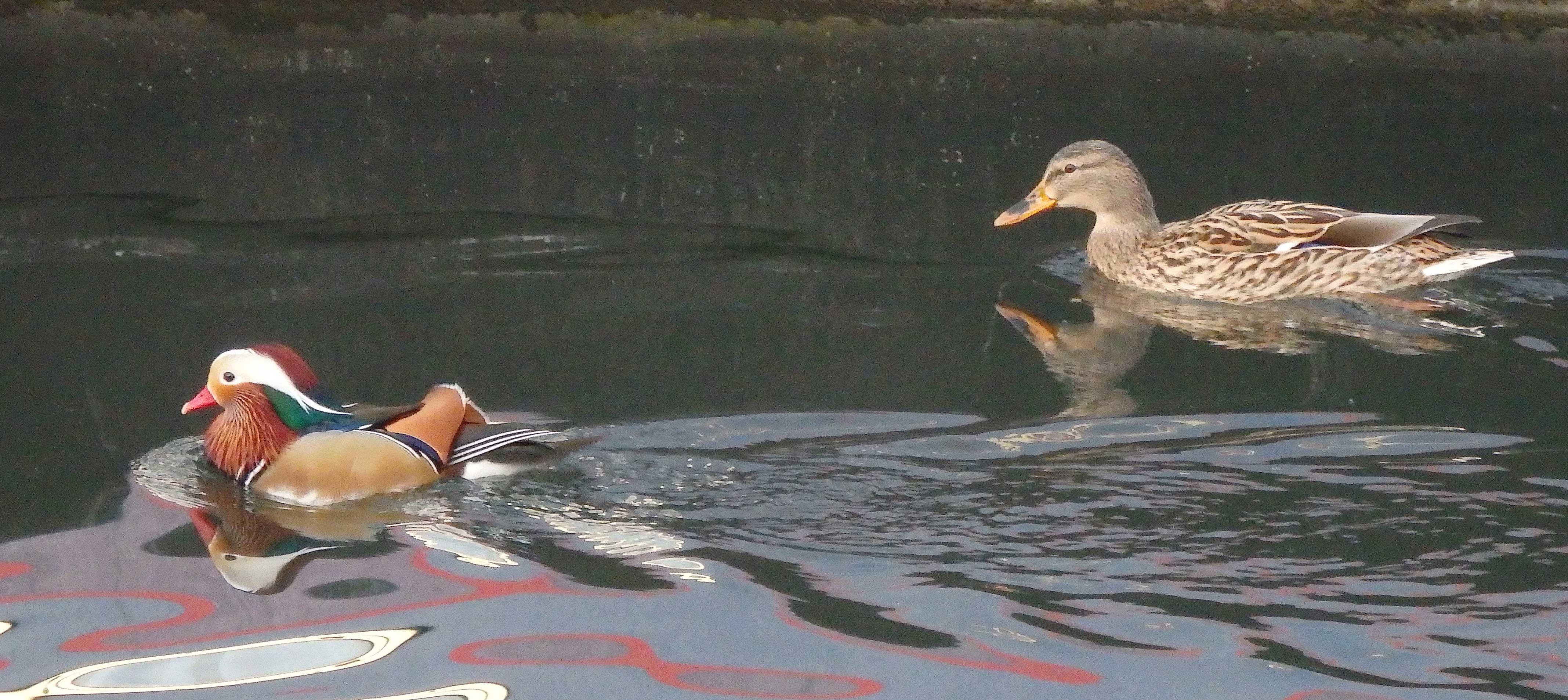
Wednesday 25 January 2017
It was the length of their tails that alerted me, just glimpsed out of the corner of my eye. As I glanced up, I saw pale pink and buff plumage, elegantly marked with black. A trio of long-tailed tits had come to join the sparrows and dunnock in the willow above the pond.
Thursday 26 January 2017
A pair of wood pigeons sat near to each other on the telegraph wire. One was comfortably steady on the precarious perch, the other wobbled backwards and forwards like an acrobat who was losing his balance.
Friday 27 January 2017
An occasional cock pheasant betrays itself with the brilliance of its colour in the buff and bleached fields. On the woodland edge, the feeder that the pheasants may still visit was surrounded by a grey cloud of pigeons, busily pecking up any grain that was available on the ground.
Saturday 28 January 2017
The sepia downland landscape of ploughed fields and bleached grassy headlands was highlighted by the hedgerow running up the slope. New shoots were ruby red in the late afternoon light. And overhead there was a flash of white as a red kite turned, its forked tail acting like a rudder, to scan the open earth.
Sunday 29 January 2017
The thrush in my back garden is mingling with the starling crowd as they quarter the ground in search of mealworms. But they only co-exist when the starlings stalk down to the end of the garden, the thrush’s favourite area, where he’s often to be seen, a pale figure going about his own business regardless of the invasion.
Monday 30 January 2017
I’ve repeatedly seen stationary buzzards recently. Usually I see one individual perched on a telegraph wire, but increasingly I see an equally solitary one squatting in the middle of a ploughed field.
Tuesday 31 January 2017
The viburnam plicatum shook as the wood pigeon shifted his weight and rebalanced on the topmost branches. His legs were splayed to remain steady as he pecked at the seeds on the tray of one of the feeders dangling from the bird table. This was the only way he could reach it, and the first time I’ve seen him doing this.
More from this site
- 2017 Archive
- • January 2017
- • February 2017
- • March 2017
- • April 2017
- • May 2017
- • June 2017
- 2016 Archive
- • January 2016
- • February 2016
- • March 2016
- • April 2016
- • May 2016
- • June 2016
- • July 2016
- • August 2016
- • September 2016
- • October 2016
- • November 2016
- • December 2016
- 2015 Archive
- • January 2015
- • February 2015
- • March 2015
- • April 2015
- • May 2015
- • June 2015
- • July 2015
- • August 2015
- • September 2015
- • October 2015
- • November 2015
- • December 2015
- 2014 Archive
- • January 2014
- • February 2014
- • March 2014
- • April 2014
- • May 2014
- • June 2014
- • July 2014
- • August 2014
- • September 2014
- • October 2014
- • November 2014
- • December 2014
- 2013 Archive
- • January 2013
- • February 2013
- • March 2013
- • April 2013
- • May 2013
- • June 2013
- • July 2013
- • August 2013
- • September 2013
- • October 2013
- • November 2013
- • December 2013
- 2012 Archive
- • January 2012
- • February 2012
- • March 2012
- • April 2012
- • May 2012
- • June 2012
- • July 2012
- • August 2012
- • September 2012
- • October 2012
- • November 2012
- • December 2012
Extracts from the novels
Submit your comments
If you have any comments, please send them in. They may be published on the site.